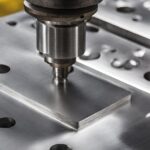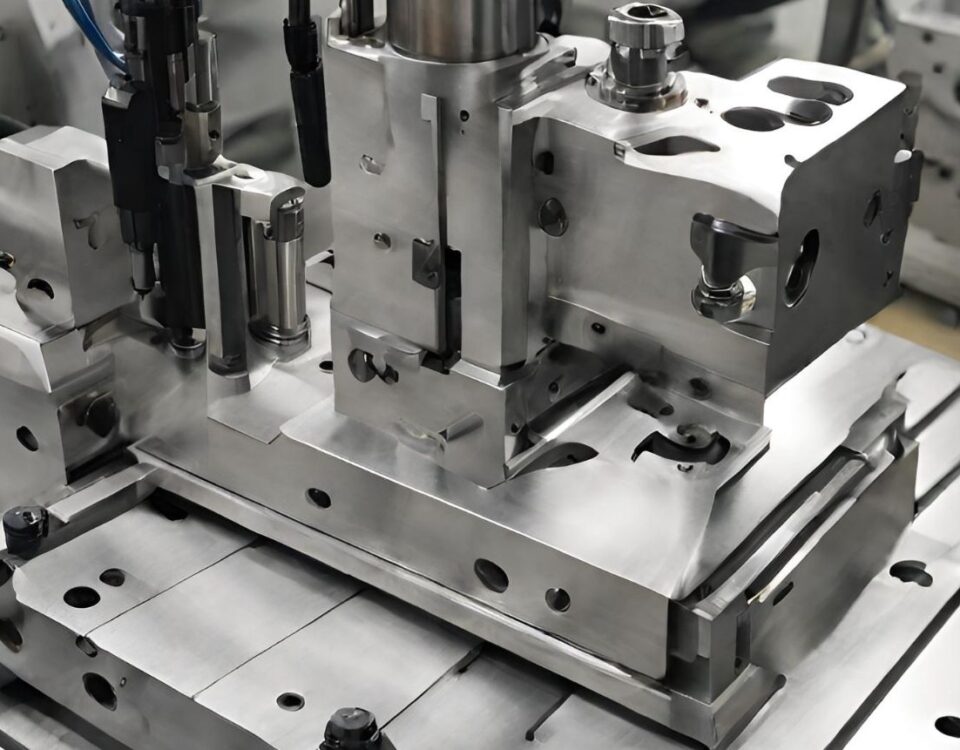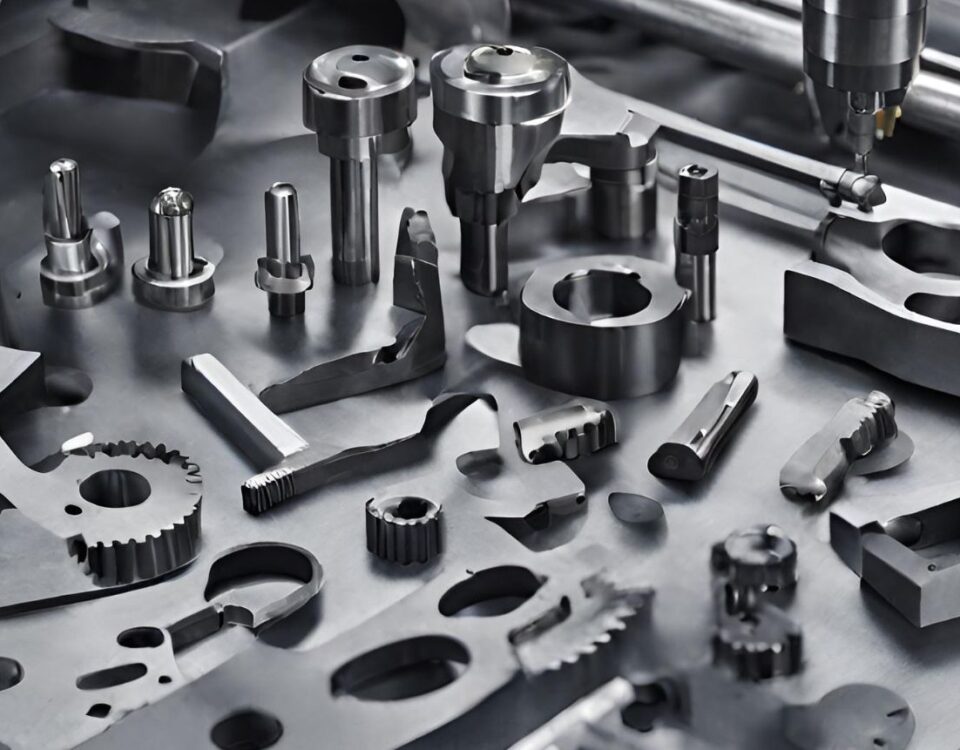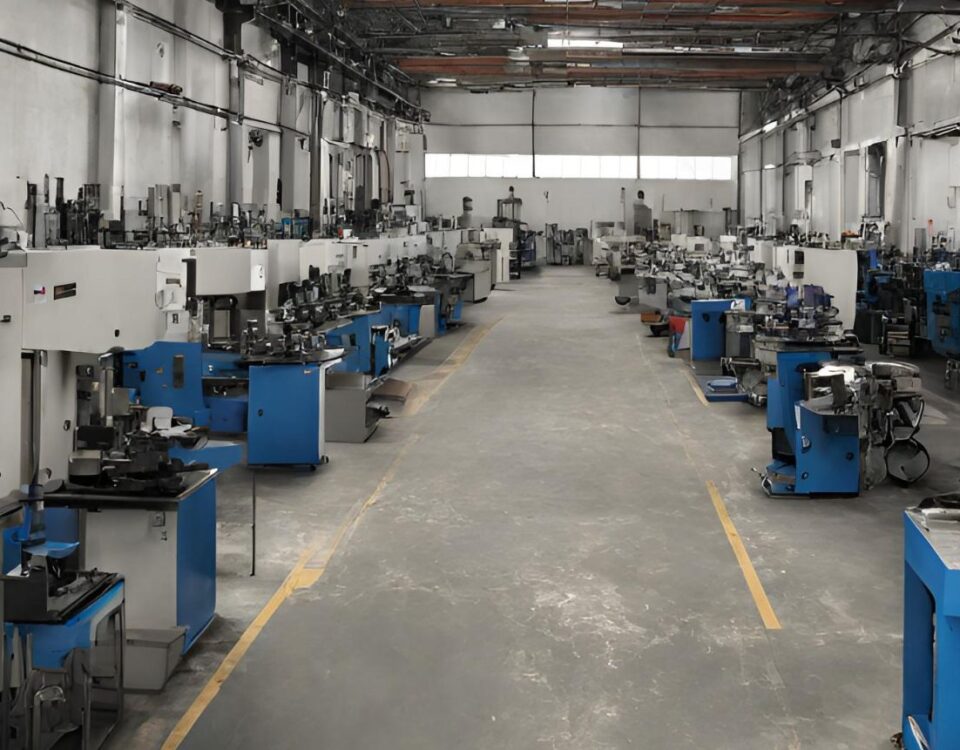
Unlocking Innovation: The Power of Customized Machining Parts
13 February 2024
Aluminum Stamping: The Art and Science of Precision Metal Fabrication
17 February 2024Machining and fabrication are two essential processes in the realm of manufacturing, each playing a distinct yet interconnected role in the creation of precision-engineered components and products. While machining involves the removal of material to achieve desired shapes and dimensions, fabrication focuses on assembling, bending, cutting, and welding raw materials to create structures and assemblies. This article delves into the intricacies of machining and fabrication, exploring their techniques, applications, and significance in modern industry.
Understanding Machining and Fabrication
Machining encompasses a range of techniques, including milling, turning, drilling, and grinding, to shape and finish raw materials such as metal, plastic, and wood with precision. Fabrication, on the other hand, involves the assembly and manipulation of various materials through processes like welding, bending, cutting, and forming to create complex structures and assemblies. While machining is often used to create individual components with tight tolerances, fabrication is employed to assemble these components into larger assemblies or finished products.
Key Components of Machining
-
Precision Machinery: Machining relies on a variety of precision machinery, including CNC (Computer Numerical Control) machines, lathes, mills, and grinders, to accurately shape and finish raw materials. These machines are programmed to perform precise movements and operations, resulting in components with tight tolerances and high surface quality.
-
Cutting Tools: Cutting tools such as end mills, drills, and inserts are essential for machining operations, as they remove material from the workpiece to create the desired shape and features. These tools come in a variety of materials and geometries, each suited to specific machining applications and materials.
-
Workholding Devices: Workholding devices such as chucks, collets, and vises are used to secure the workpiece during machining operations, ensuring stability and accuracy. Proper workholding is critical to achieving precise results and preventing workpiece deflection or movement during cutting.
-
Coolant Systems: Coolant systems are employed in machining to dissipate heat, lubricate cutting tools, and flush away chips and debris generated during cutting. Proper cooling and lubrication are essential for prolonging tool life, maintaining surface finish, and preventing thermal damage to the workpiece.
Key Components of Fabrication
-
Welding Equipment: Welding equipment such as arc welders, MIG (Metal Inert Gas) welders, and TIG (Tungsten Inert Gas) welders are used to join metal components through the application of heat and pressure. Welding processes vary depending on the materials being joined and the desired strength and appearance of the weld.
-
Cutting Equipment: Cutting equipment such as plasma cutters, laser cutters, and water jet cutters are employed to cut and shape raw materials such as metal, plastic, and wood. These cutting processes enable precise shaping and sizing of components for fabrication assemblies.
-
Bending and Forming Tools: Bending and forming tools such as press brakes, roll formers, and stamping presses are used to shape and manipulate sheet metal and other materials into desired forms and profiles. These tools enable the creation of complex geometries and structures in fabrication assemblies.
-
Assembly Fixtures: Assembly fixtures such as jigs, fixtures, and templates are used to hold and align components during assembly operations. These fixtures ensure accuracy and consistency in fabrication assemblies, reducing rework and improving overall quality.
Applications of Machining and Fabrication
-
Aerospace and Defense: Machining and fabrication play a critical role in the aerospace and defense industries, where precision-engineered components and assemblies are essential for aircraft, spacecraft, and military equipment. From engine components and structural assemblies to avionics enclosures and weapon systems, machining and fabrication processes enable the production of complex and high-performance aerospace and defense products.
-
Automotive Engineering: Machining and fabrication are integral to automotive engineering, where precision-engineered components and assemblies are used in vehicles, engines, transmissions, and chassis systems. From engine blocks and cylinder heads to suspension components and body panels, machining and fabrication processes enable the production of lightweight, durable, and high-performance automotive products.
-
Medical Devices and Healthcare: Machining and fabrication play a crucial role in the medical devices and healthcare industries, where precision-engineered components and assemblies are used in diagnostic equipment, surgical instruments, implants, and prosthetics. From implantable devices and orthopedic implants to surgical tools and medical imaging systems, machining and fabrication processes enable the production of precise, reliable, and biocompatible medical products.
-
Electronics and Semiconductor Manufacturing: Machining and fabrication are essential in the electronics and semiconductor manufacturing industries, where precision-engineered components and assemblies are used in electronic devices, circuit boards, and semiconductor devices. From microelectronic components and printed circuit boards to semiconductor wafers and electronic enclosures, machining and fabrication processes enable the production of high-performance, compact, and reliable electronic products.
Advantages of Machining and Fabrication
-
Precision and Accuracy: Machining and fabrication processes enable the production of precision-engineered components and assemblies with tight tolerances and high surface quality. This precision and accuracy are essential for ensuring the functionality, reliability, and performance of manufactured products.
-
Versatility and Flexibility: Machining and fabrication processes offer versatility and flexibility in the production of a wide range of components and assemblies for various industries and applications. From small, intricate parts to large, complex structures, machining and fabrication processes can accommodate diverse manufacturing requirements.
-
Efficiency and Cost-effectiveness: Machining and fabrication processes are highly efficient and cost-effective, enabling the production of high-quality components and assemblies in a timely and cost-efficient manner. With advanced machining and fabrication technologies, manufacturers can optimize production processes, minimize waste, and reduce production costs while maintaining product quality and performance.
-
Innovation and Customization: Machining and fabrication processes enable innovation and customization in the design and production of components and assemblies for specific customer requirements and applications. With advanced machining and fabrication technologies, manufacturers can develop customized solutions that meet the unique needs of customers and markets, driving innovation and competitiveness in the manufacturing industry.
Challenges and Future Trends
Despite their numerous advantages, machining and fabrication processes face challenges such as technological complexity, skilled labor requirements, and environmental sustainability concerns. However, ongoing advancements in digital design, automation, additive manufacturing, and sustainable materials are poised to revolutionize the machining and fabrication industry, making processes more efficient, sustainable, and adaptable to changing market demands.
Conclusion
In conclusion, machining and fabrication are integral processes in modern manufacturing, enabling the production of precision-engineered components and assemblies for various industries and applications. From aerospace and defense to automotive engineering, medical devices, and electronics manufacturing, machining and fabrication processes play a crucial role in driving innovation, efficiency, and competitiveness in the global marketplace. As technology continues to evolve and customer demands evolve, the importance of machining and fabrication in unlocking new possibilities and driving progress in manufacturing cannot be overstated.




